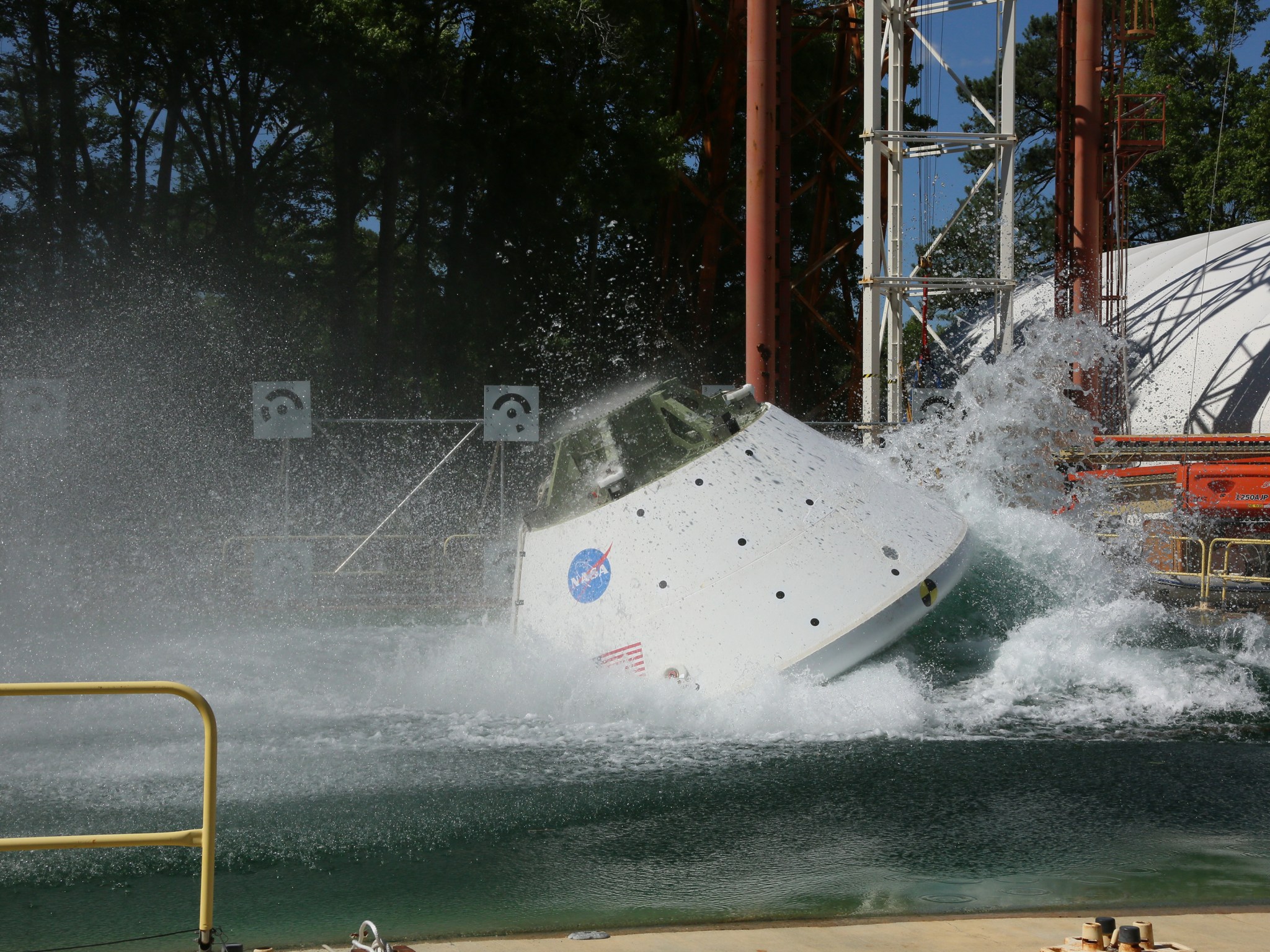
Media are invited to watch engineers test a mockup of NASA’s Orion spacecraft in a simulated ocean splashdown Thursday, Aug. 25, at NASA’s Langley Research Center in Hampton, Virginia.
The test is planned for 3:30 p.m. EDT, but due to the nature of the testing, the exact time of the drop could change. Prior to the test, media will get a poolside update on the tests, as well as overall progress made in preparing Orion for NASA’s Journey to Mars.
Briefing participants will include:
- Bill Hill, deputy associate administrator for Exploration Systems Development, NASA Headquarters
- Dave Bowles, Langley director
- Lara Kearney, manager, Orion Crew and Service Module, NASA’s Johnson Space Center
- Mike Hawes, Orion program manager, Lockheed Martin
The deadline for U.S. citizens to apply for media access is noon Wednesday, Aug. 24. Interested media should contact Sasha Ellis by email at 757-864-5473 or sasha.c.ellis@nasa.gov. Media must arrive by 2:30 p.m. at the Langley badge and pass office on the day of the test. Accreditation for international media is closed.
Orion has been undergoing a series of water impact tests in the center’s Hydro Impact Basin to help engineers understand how to best protect the crew and spacecraft when they return to Earth from deep space missions. The test capsule, coupled with the heat shield from Orion’s first spaceflight, will swing like a pendulum into Langley’s 20-foot-deep basin. Inside the capsule will be two test dummies – one representing a 105-pound woman and the other, a 220-pound man — outfitted in spacesuits equipped with sensors. These sensors will provide critical data that will help NASA understand the forces crew members could experience when they splash down in the ocean.
Water impact testing is helping NASA evaluate how the Orion spacecraft may behave when landing under its parachutes in different wind conditions and wave heights. During Orion’s next flight test, Exploration Mission-1, the uncrewed spacecraft will launch on NASA’s Space Launch System rocket, travel more than 40,000 miles beyond the moon, and return at speeds of up to 25,000 mph.
To learn more about Langley’s many contributions to Orion, visit:
http://go.nasa.gov/1vKhx1j
For more information on Orion, visit:
https://www.nasa.gov/orion
-end-
Cheryl Warner
Headquarters, Washington
202-358-1100
cheryl.m.warner@nasa.gov
Sasha Ellis
Langley Research Center, Hampton, Va.
757-864-5473
sasha.c.ellis@nasa.gov


























